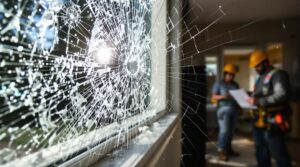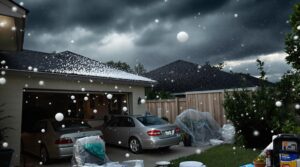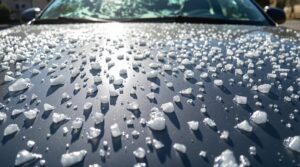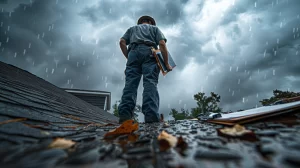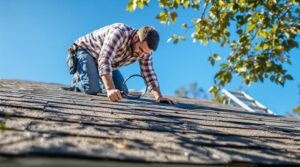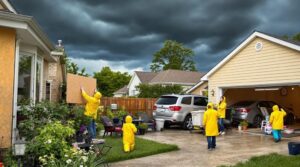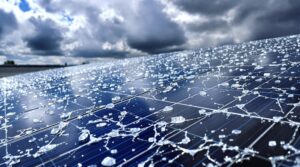During active hail conditions, individuals should immediately seek shelter in sturdy buildings, moving away from windows and exterior doors. If driving, safely pull over, activate hazard lights, and angle the vehicle to protect occupants from broken glass. Using blankets or jackets provides additional protection for the head and essential areas. Staying in interior rooms or basements minimizes injury risks from ice particles reaching speeds of 100 km/h. Proper preparation and response strategies can greatly enhance survival outcomes.
Key Takeaways
- Immediately seek shelter in a sturdy building and move to an interior room away from windows and exterior doors.
- If driving, safely pull over, turn on hazard lights, and keep your head below window level.
- Use blankets or thick clothing to protect your head if glass breaks during the storm.
- Stay inside until the hail completely stops, as hailstones can cause severe injury at high speeds.
- Avoid sheltering under trees or weak structures that could collapse from hail impact and strong winds.
What Makes Hailstorms Dangerous
Hailstorms represent one of nature's most destructive weather phenomena, characterized by precipitation of ice particles that can reach speeds of up to 100 km/h. These storms generate hailstones ranging from less than one inch to over 2.75 inches in diameter, causing substantial property damage and posing severe risks to both life and infrastructure.
Multiple hailstorm hazards compound their destructive potential. The combination of high winds, lightning, and potential tornado development creates a complex threat matrix.
Statistics demonstrate the escalating impact, with NOAA reporting 6,962 hail events in 2023, marking a significant increase from previous years. The financial implications are equally severe, with insurance claims for hail damage reaching billions annually.
Beyond immediate structural damage to buildings and vehicles, hailstorms frequently trigger power outages, agricultural devastation, and environmental disruption. The accompanying reduced visibility and post-storm conditions, including downed power lines and accumulated hail, create additional safety risks.
Essential Steps Before a Hailstorm Hits
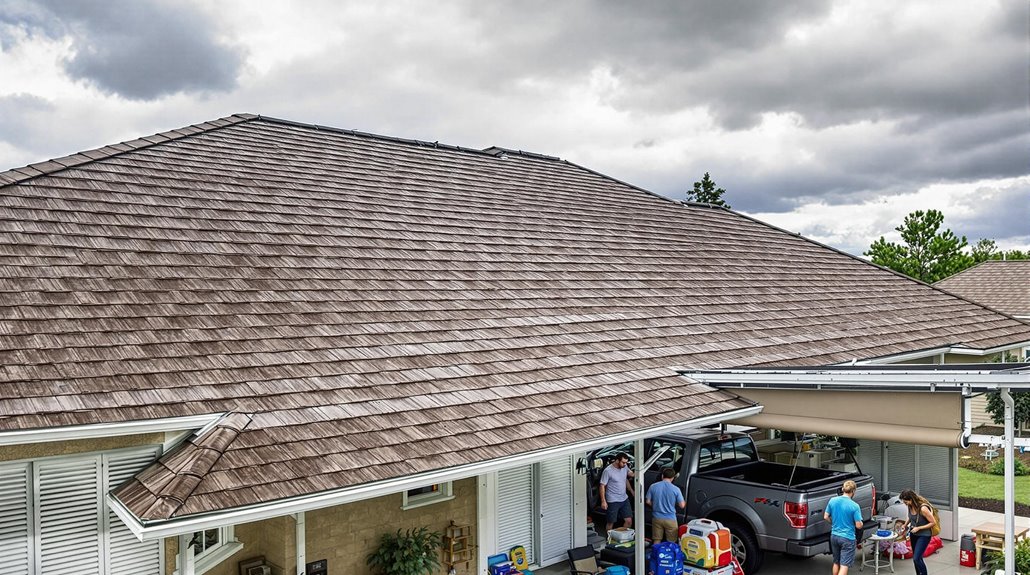
When severe weather threatens to produce hail, implementing extensive preparatory measures becomes essential for minimizing potential damage and guaranteeing personal safety.
Thorough roof maintenance, including inspection for existing damage and upgrading to impact-resistant materials, serves as a critical first line of defense. Installing protective features such as storm shutters and maintaining clear eavestroughs further fortifies structural integrity.
Emergency preparedness requires assembling thorough emergency kits containing essential supplies, establishing evacuation protocols, and maintaining communication through NOAA Weather Radio alerts.
Vehicle protection measures involve securing automobiles in covered structures or utilizing specialized hail protection covers. Property preservation extends to securing outdoor items that could become projectiles during severe weather events.
Additionally, thorough documentation of property condition and review of insurance policies guarantees proper coverage for potential hail damage. Implementing these preventive strategies markedly reduces vulnerability to hail-related impacts while maximizing readiness for severe weather events.
Safety Measures During Active Hail
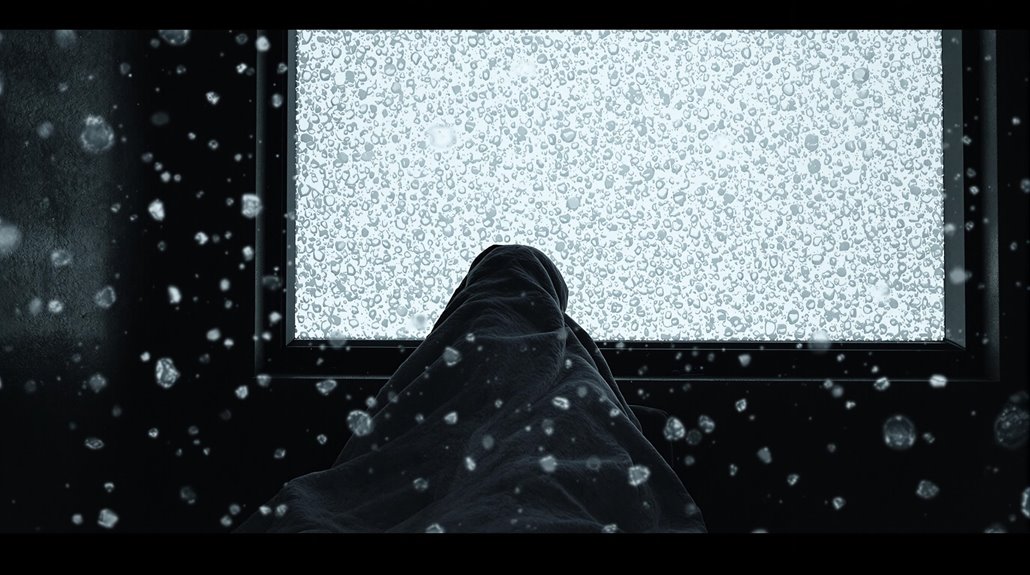
As severe hail conditions materialize, individuals must immediately implement vital safety protocols to minimize the risk of injury and property damage. The primary focus should be seeking appropriate shelter options, with sturdy buildings being ideal.
Once inside, occupants should relocate to interior rooms or basements, maintaining distance from windows, doors, and external walls.
For those caught in vehicles during a hailstorm, pulling over safely away from traffic and hazardous structures is essential. Drivers and passengers should activate hazard lights, remain seated with seatbelts fastened, and position themselves centrally in the vehicle.
Head protection using available items such as blankets or jackets provides vital defense against potential broken glass. Avoiding common hazards like trees, overpasses, and low-lying areas is paramount, as these locations pose increased risks during severe weather conditions.
Additionally, individuals should remain vigilant of surrounding conditions, including flying debris and deteriorating road conditions that may compromise safety.
Protecting Your Vehicle in Hail

Multiple protective measures can safeguard vehicles from destructive hail impacts during severe weather events.
Primary vehicle protection strategies include seeking covered parking structures or utilizing alternative shelter options near buildings positioned opposite to wind direction. When permanent structures are unavailable, temporary solutions can provide effective hail prevention.
Portable protection methods encompass specialized hail covers, inflatable car shields, and DIY alternatives such as moving blankets secured with appropriate weights.
Strategic placement of corrugated cardboard, floor mats, or potting soil bags on vulnerable vehicle surfaces can minimize impact damage. For vehicles equipped with roof racks, thin plywood placement offers additional protection against falling hailstones.
Long-term preventive measures include maintaining thorough insurance coverage specifically for hail damage, monitoring weather forecasts for early warning, and establishing emergency funds for potential repairs.
Regular vehicle maintenance and awareness of high-risk hail zones further enhance protection strategies against severe weather impacts.
Key Actions After the Storm Passes
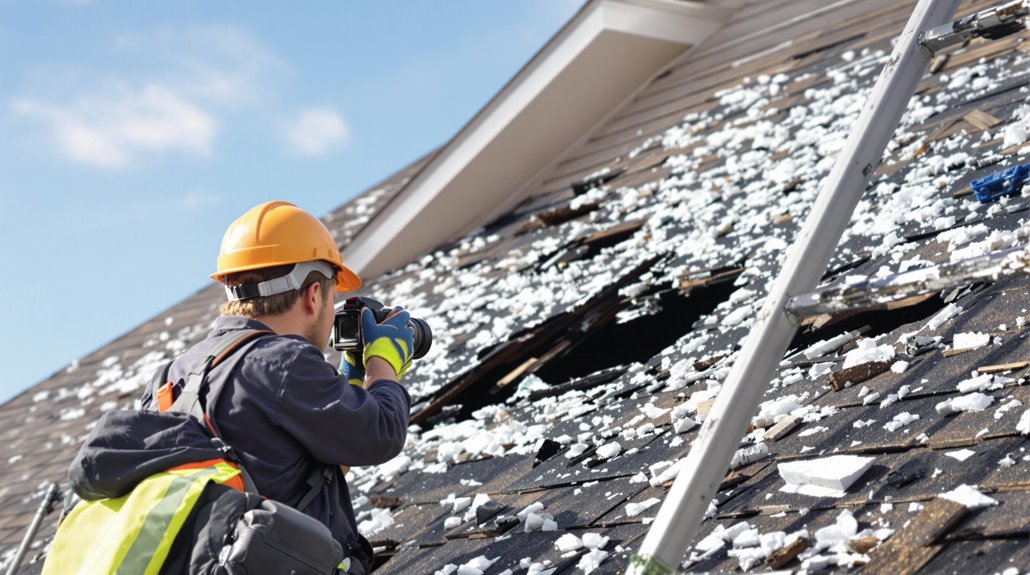
Once a hailstorm subsides, immediate assessment and documentation of potential damage becomes vital for property preservation and insurance purposes.
A systematic damage assessment should begin with examining roofs, decks, and vehicles, followed by thorough inspection of exterior surfaces including utility boxes, gutters, and air conditioning units.
Property owners must implement repair prioritization by addressing urgent issues first, such as leaking roofs and broken windows that could lead to secondary damage.
Extensive documentation through detailed photographs and videos from multiple angles serves as essential evidence for insurance claims. This documentation should encompass both exterior and interior damage, including displaced debris.
Safety considerations require immediate attention to potential hazards like compromised electrical systems and structural integrity.
Engaging qualified contractors for temporary repairs may be necessary while maintaining detailed records of all restoration work.
Contact with insurance providers should be initiated promptly, supported by the collected visual evidence and documentation of damages.
The Benefits Of Consulting A Public Adjuster
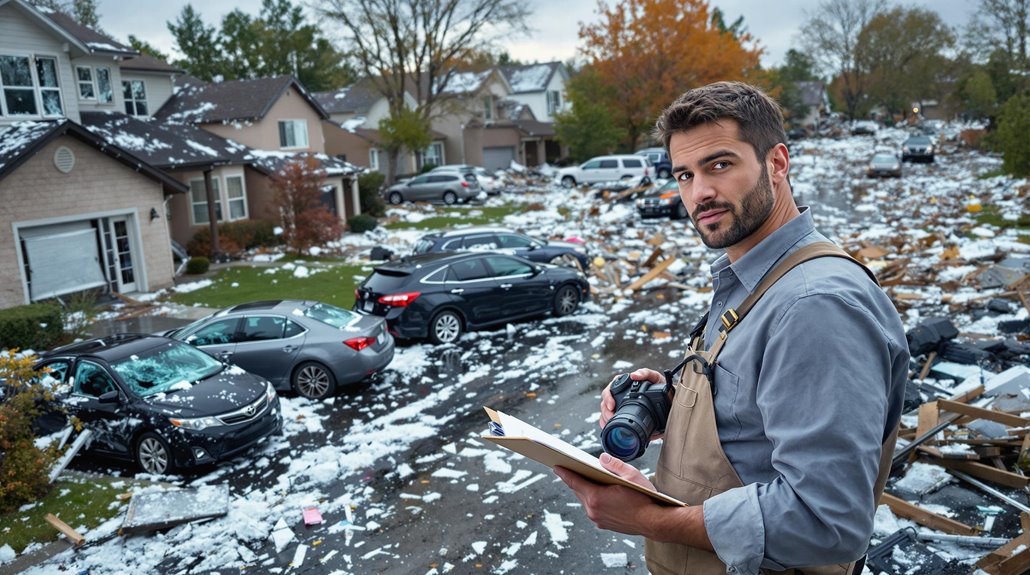
Following hailstorm damage, consulting a public adjuster can provide critical expertise in managing complex insurance claims and ensuring thorough documentation of all property impacts.
These independent professionals conduct extensive, objective assessments of structural and cosmetic damage, often identifying issues that might otherwise go unnoticed during standard inspections.
Their specialized knowledge typically results in more favorable claim settlements, as they manage the entire claims process while advocating for maximum policyholder compensation based on detailed evidence and professional documentation.
Studies show claims handled by public adjusters result in 800% higher settlements compared to those filed without professional representation.
Expertise In Insurance Claims
Professional guidance through the complexities of hail damage insurance claims can greatly improve settlement outcomes. Public adjusters possess extensive expertise in insurance policy interpretation, enabling them to identify all covered damages and applicable benefits within policy terms.
Their knowledge extends to structural assessment, documentation protocols, and regulatory compliance. These specialists implement proven claim negotiation strategies when dealing with insurance carriers, ensuring thorough documentation of both visible and latent hail damage.
They meticulously catalog impacts to roofing systems, siding materials, and other vulnerable surfaces, while maintaining detailed records of all weather-related deterioration. Their systematic approach includes assessment of secondary damage from water infiltration and compromised building envelope integrity.
This technical expertise helps maximize claim settlements while maintaining compliance with insurance industry standards and state regulations.
Regular follow-up with insurance adjusters is crucial for ensuring claims stay on track and reach optimal resolutions.
Objective Damage Assessment
Public adjusters bring an invaluable layer of objectivity to hail damage assessment, operating independently from insurance carriers to serve policyholder interests. Their thorough damage evaluation methodology encompasses detailed documentation, expert interpretation of insurance terminology, and extensive analysis of all impacted areas. Unlike claims adjusters' standard timeline, which typically requires determination within 30-60 days, public adjusters can dedicate additional time to complex weather-related assessments.
| Assessment Component | Standard Review | Public Adjuster Review |
|---|---|---|
| Surface Damage | Visual Only | Thorough Analysis |
| Hidden Damage | Limited Scope | In-depth Investigation |
| Documentation | Basic Photos | Detailed Evidence Package |
| Policy Interpretation | General Terms | Specific Coverage Details |
| Valuation Method | Standard Tables | Market-Based Assessment |
This systematic approach guarantees accurate identification of both visible and concealed hail damage while providing scientific documentation to support claims. The adjuster's expertise in weather-related structural impacts allows for precise evaluation of damage patterns, impact severity, and long-term implications for property integrity.
Streamlined Claim Process
Streamlining the insurance claim process becomes considerably more efficient when consulting a public adjuster during hail damage assessment. These professionals provide expert guidance throughout the claim documentation procedures, ensuring accurate representation of storm-related damages while managing communications with insurance carriers.
Public adjusters conduct thorough policy analyses to identify applicable coverage and relevant clauses specific to hail damage claims. Their expertise in insurance negotiation helps prevent common pitfalls that often delay settlement, including incomplete documentation or underestimated damage assessments.
Additionally, they assist in selecting reputable contractors, protecting policyholders from potential fraud by vetting local repair services and avoiding "storm chasers" who may provide substandard work. This systematic approach helps expedite the claims process while maximizing the likelihood of fair compensation for hail-related property damage. Working with licensed public adjusters who maintain active memberships in professional networks like PCAN ensures access to pre-vetted experts with proven track records and strict ethical standards.
Higher Claim Payouts & Settlements
Engaging a public adjuster for hail damage claims consistently leads to higher settlement amounts compared to self-managed claims. Through sophisticated claim strategies and professional negotiation tactics, public adjusters leverage their expertise to maximize compensation for property damage.
Their extensive documentation methods identify all hail-related impacts, including subtle structural damages that might otherwise go unnoticed. Public adjusters employ systematic approaches to claims processing, utilizing detailed photographic evidence, professional damage assessments, and expert repair estimates.
Their thorough understanding of insurance policies enables them to identify coverage nuances and applicable benefits. By objectively representing policyholder interests, they guarantee that insurance companies provide fair compensation aligned with actual damage values.
Their professional expertise in claim optimization often results in considerably higher settlements than initial insurance company offers. While they typically charge up to 10% commission of the final settlement amount, the significantly increased payouts generally outweigh these fees.
About The Public Claims Adjusters Network (PCAN)
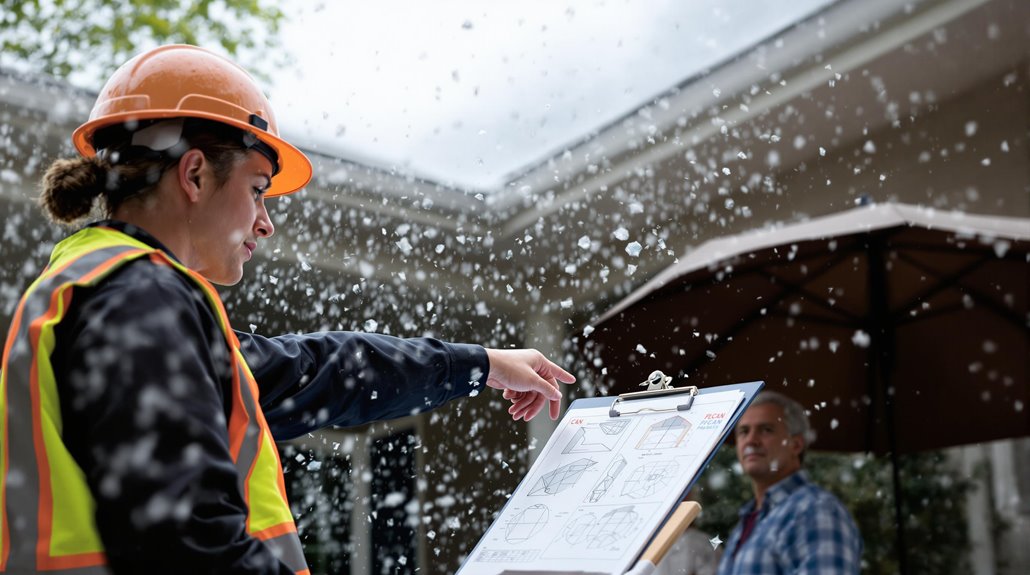
When hail damage strikes property, the Public Claims Adjusters Network (PCAN) serves as a crucial intermediary between property owners and insurance companies. These independent professionals specialize in evaluating hail-induced structural damage and maneuvering complex insurance claims processes to guarantee fair compensation for affected property owners.
PCAN adjusters conduct thorough property inspections, documenting all hail-related damages through detailed evaluations and photographic evidence. Their expertise in meteorological damage patterns and construction materials enables them to identify both obvious and latent damage that might otherwise go unnoticed.
The network's members maintain extensive knowledge of insurance policies, particularly those covering severe weather events.
The adjuster benefits include professional representation throughout the claims process, typically resulting in higher settlement amounts. PCAN members handle all documentation, negotiations, and advocacy requirements, allowing property owners to focus on recovery while guaranteeing their insurance claims receive proper attention and fair evaluation.
Frequently Asked Questions
Can Hail Damage Solar Panels, and Are They Covered by Insurance?
Hail impact can severely damage solar panels, causing both surface and internal component deterioration. Most homeowners' insurance policies cover solar panel protection against hail damage, though coverage specifics should be verified.
What Size Hail Typically Causes Structural Damage to Buildings?
Hail measuring 1 inch or larger typically threatens structural integrity, with significant building damage occurring at 1.75 inches. Severe structural impacts become widespread when hail exceeds 2.5 inches in diameter.
How Long Do Hailstorms Usually Last?
Hailstorms typically exhibit brief hail duration patterns, lasting between a few minutes to 15 minutes, though storm frequency and intensity vary. Extended events can occur under specific atmospheric conditions and geographic influences.
Does Home Insurance Cover Temporary Relocation During Extensive Hail Damage Repairs?
Most homeowners insurance policies include temporary housing coverage during extensive hail damage repairs, subject to insurance policy details regarding coverage limits, deductibles, and specific requirements for relocation eligibility.
Are There Warning Signs That Indicate Hail Is About to Fall?
Like nature's warning bells, several hail indicators emerge: sudden temperature drops, intense winds, heavy rain, shifts in wind direction, and weather alerts from meteorological radar systems tracking storm cells.
References
- https://www.amfam.com/resources/articles/safe-and-happy-family/what-to-do-during-a-hailstorm
- https://hazards.fema.gov/nri/hail
- https://www.statefarm.com/simple-insights/residence/staying-safe-in-a-hailstorm
- https://www.progressive.com/answers/tips-for-driving-in-hail/
- https://ezautospa.com/25122/hail-damage-statistics/
- https://www.battlbox.com/blogs/outdoors/how-to-stay-safe-in-a-hailstorm
- https://www.iii.org/fact-statistic/facts-statistics-hail
- https://www.thepersonal.com/blog/-/how-to-prepare-for-a-hailstorm
- https://www.weather.gov/mlb/hail_threat
- https://www.mccoys.com/diy-center/weather-storms-emergencies/how-to-prepare-for-a-hailstorm

